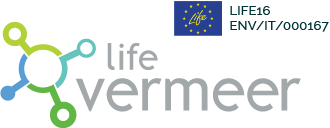Screen Shots
The VERMEER FCM tool is integrated in the MERLIN-Expo platform.
All the potential features of the MERLIN-Expo platform are described in detail on MERLIN-Expo Official Page
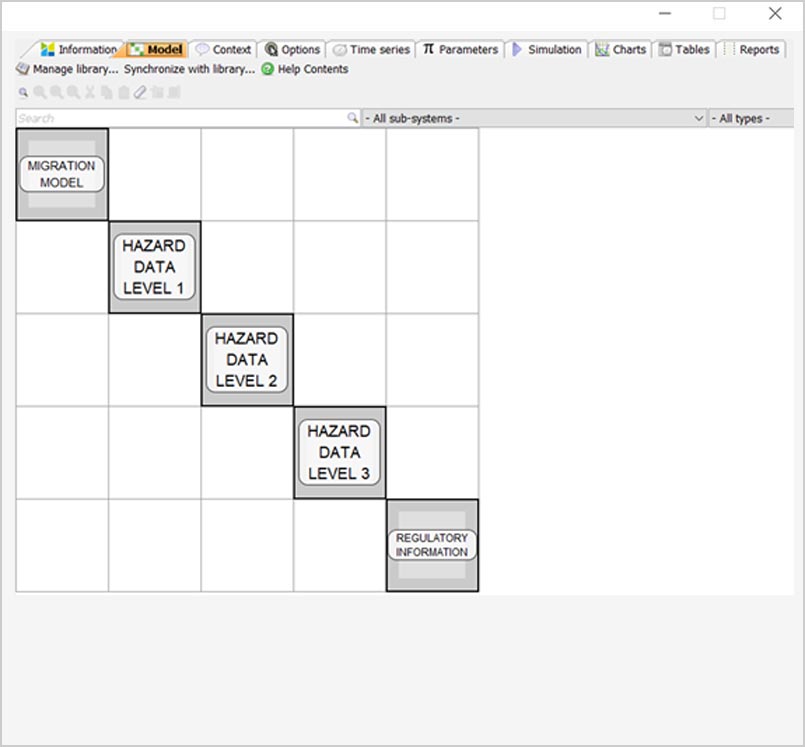
Model selection
The VERMEER FCM tool can be used to support the risk assessment of chemicals intended to be used in plastics food contact materials (FCM) by providing information on the exposure (i.e. migration), hazard endpoints and the regulatory status (i.e. included in Annex I of Regulation 10/2011 or not). The tool consists of 5 building blocks:- Migration model: simulates the migration of chemicals from the FCM into the food;
- Hazard data: predicted by VEGA models and subdivided in 3 levels based on the amount and type of toxicological information needed as a function of the migration of the chemical in food (in accordance with the EFSA guidance). Predictions are provided for mutagenicity and chromosome damage (level 1); for sub-chronic toxicity and accumulation potential (level 2); and for reproductive and developmental toxicity and chronic/carcinogenicity toxicity (level 3).
- Regulatory Information: indicates whether or not the chemical is included in Annex I of Regulation 10/2011. If available, the Specific Migration Limit (SML) or restrictions of use are also provided.
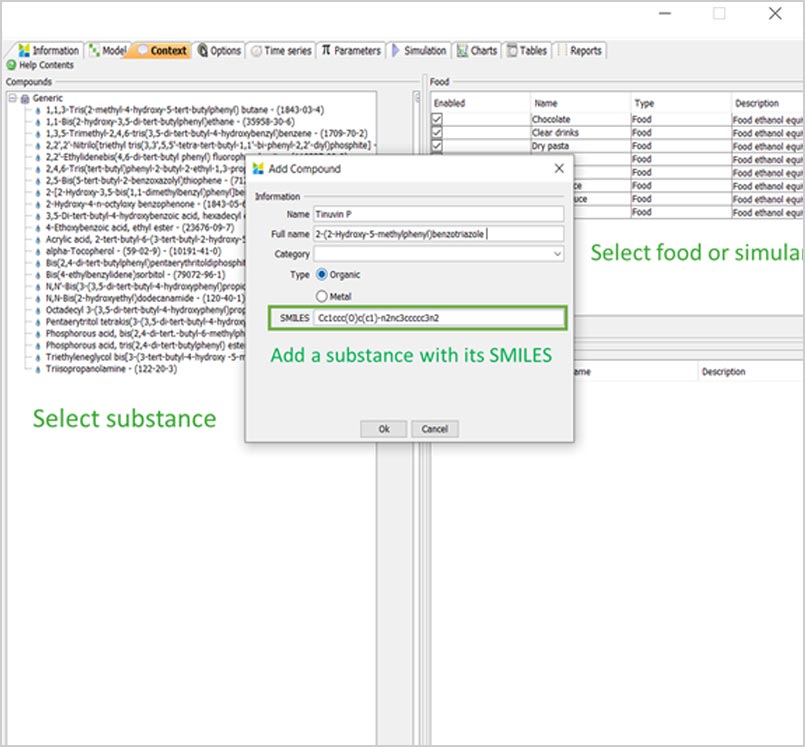
Context: Compound and Food selection
To start the prediction, the compound(s) of interest (i.e. migrating chemical) is selected as well as the food concerned. A comprehensive list of possible migrating chemicals and types of food is proposed in the VEMEER FCM tool under the ‘context’ tab. Each chemical can be found by its name or ECAS number. In case the chemical of interest is not yet present in the list, it can be added manually. In order to be able to perform the VEGA predictions, SMILES should be inserted as well. For each type of food, a food-ethanol equivalent is provided. In case the food in contact with the FCM is not in the list or if another food-ethanol equivalent needs to be used, the information can be inserted manually.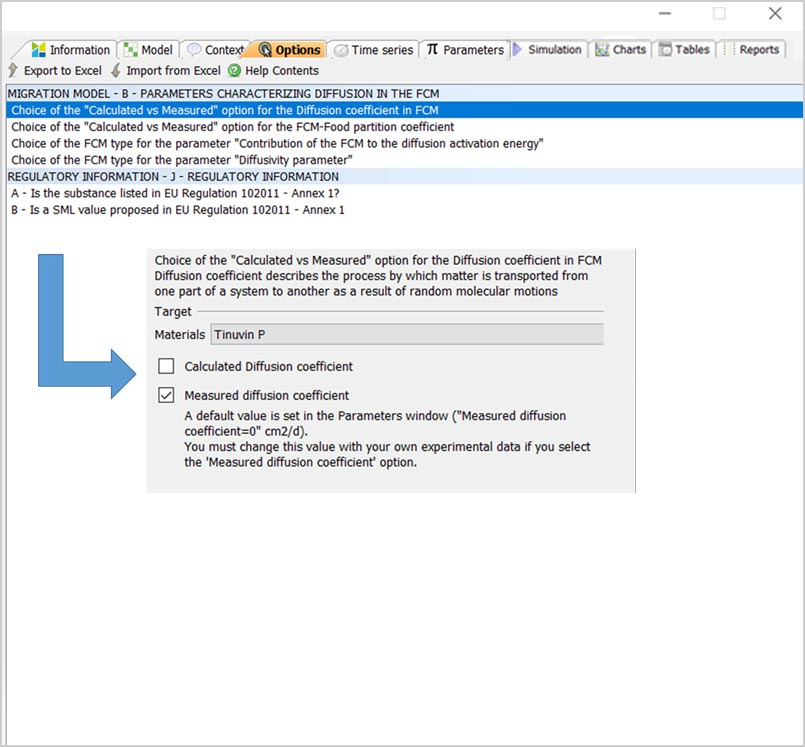
Calculated vs measured parameters
The “Option” tab offers the user the possibility to model the migration either with calculated or measured values for some parameters. By default, “Calculated” parameters is selected and the program will used calculated parameters based on default values. In case “Measured” parameters is selected, the user has to add its own measured values in the ‘Parameters’ tab. In this tab, the type of FCM can also be selected.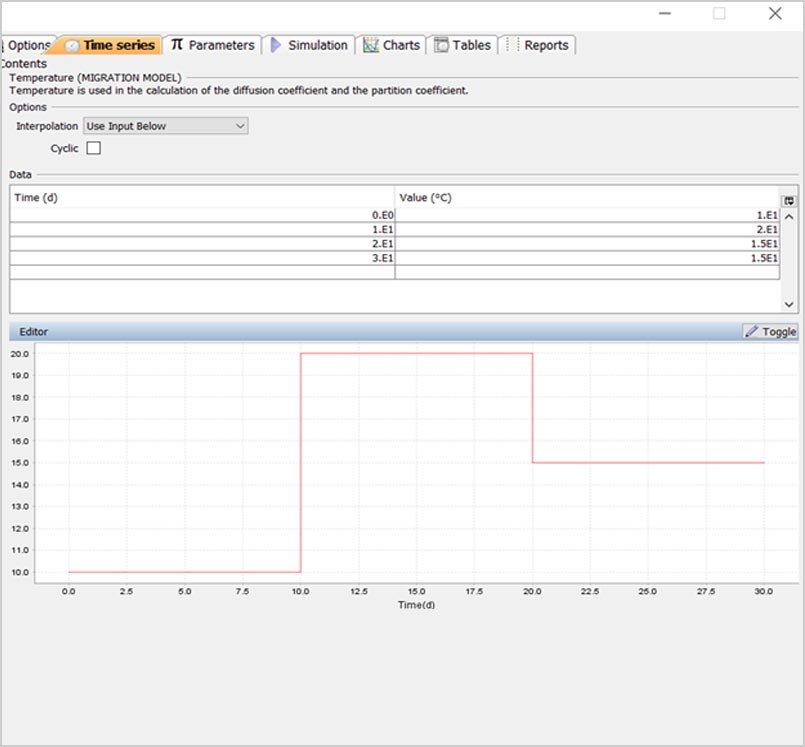
Migration simulation condition
In the ‘Time series’ tab, the user can select the temperature at which the migration modelling should be performed as well as the duration. Temperature can be constant over time, or show temporal variations.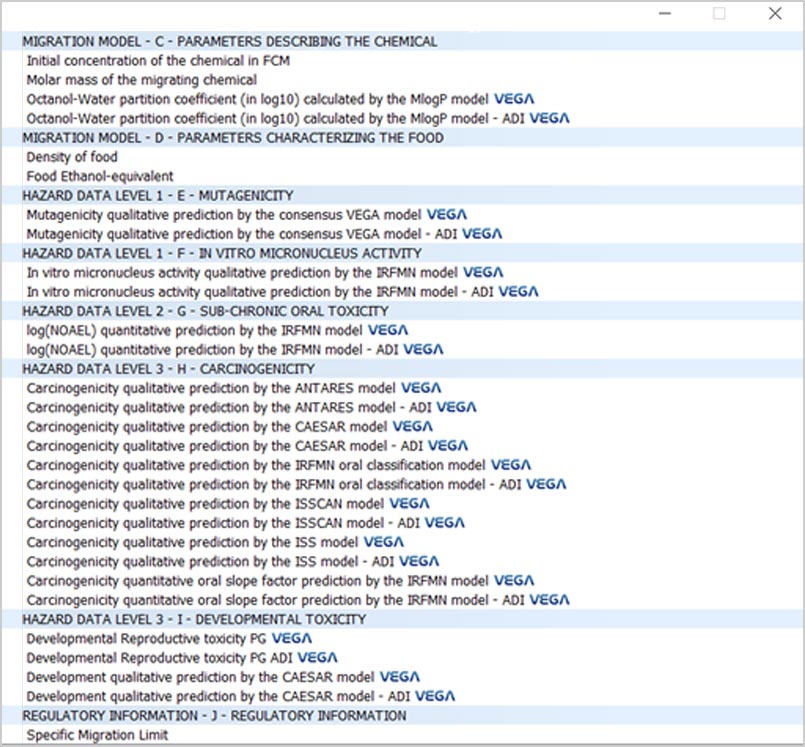
Parameters and hazard data predictions
In the ‘Parameters’ tab, additional information on the chemical and the food needs to be provided (e.g. contact area between food and FCM, the density of FCM and food, the thickness of the FCM layer and the volume of food contained in the FCM). For other parameters, indicated by the tag, predictions can be made by the relevant QSAR model available in VEGA. For each of the hazard-related parameters, two types of models are available: one providing the quantitative or qualitative value of the prediction and another one related to the Applicability Domain Index (ADI) or consensus score associated with the prediction.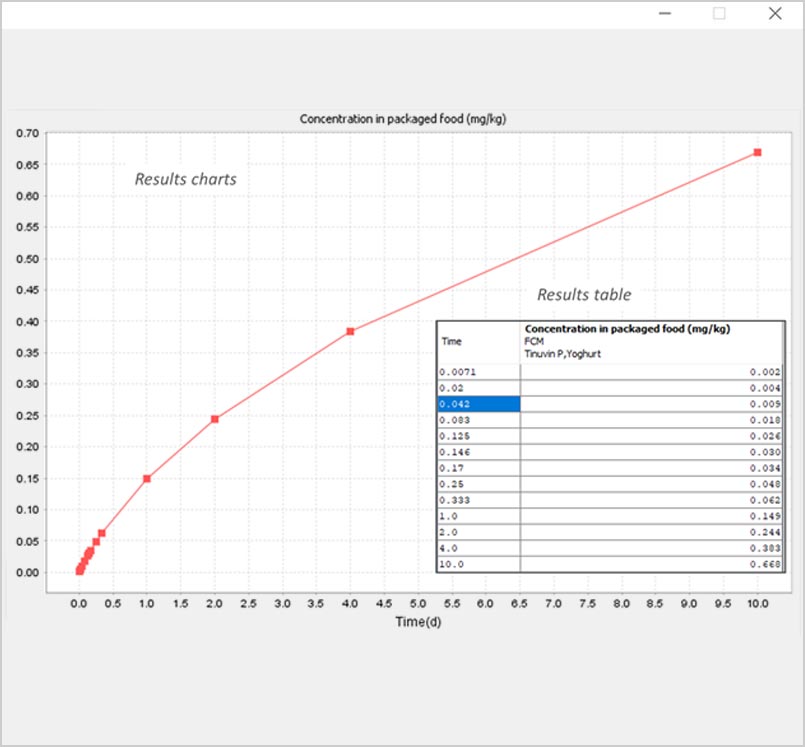
Results
After running the simulation, the VERMEER FCM tool generates figures and tables to visualize the results of migration in the tab “Graphs” and “Tables”. Tables of VEGA predictions for hazard endpoints can also be found in the tab “Tables”. The user can export all the output data of the simulation and hazard prediction to a text or Excel file and a report can be generated.


